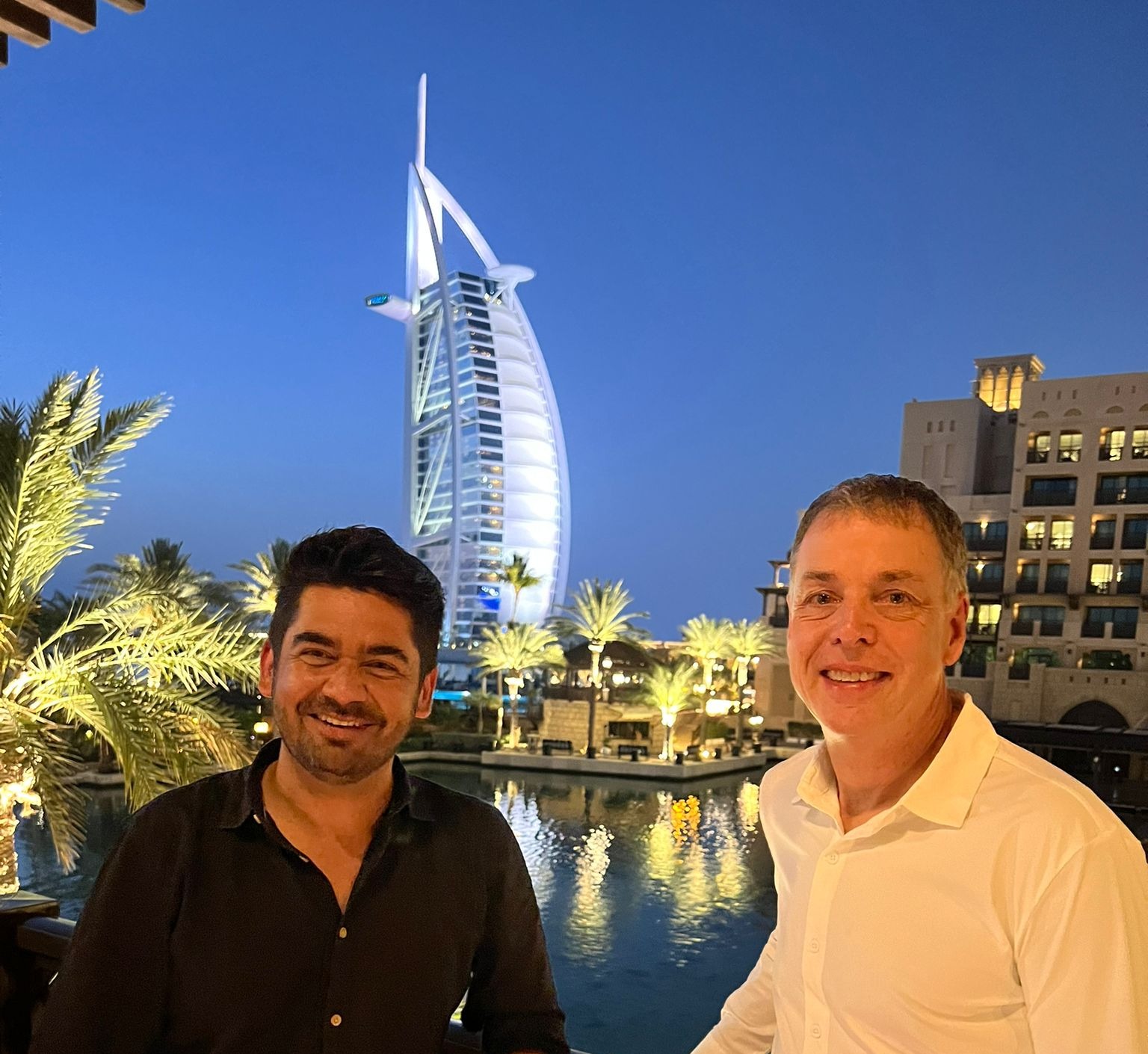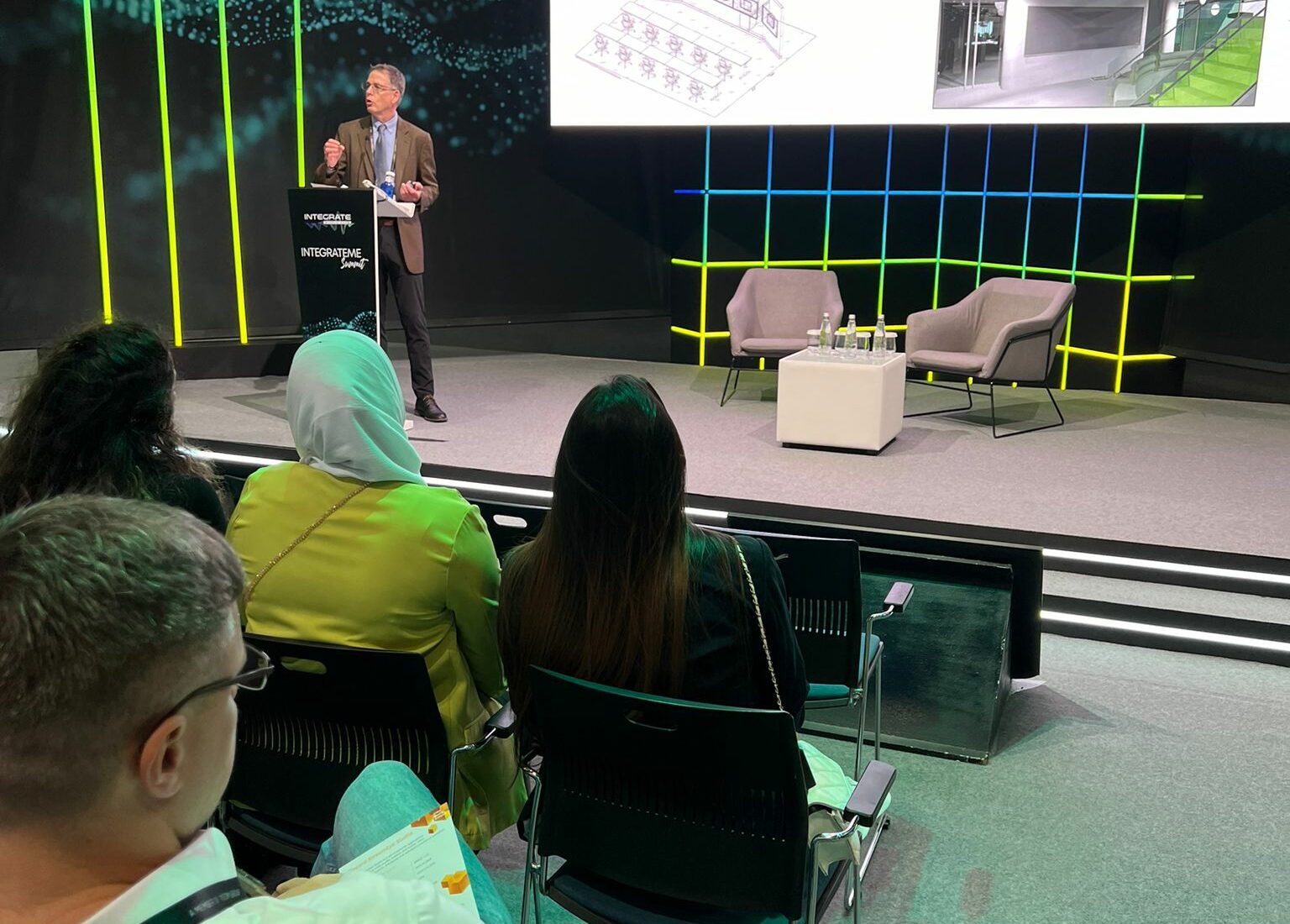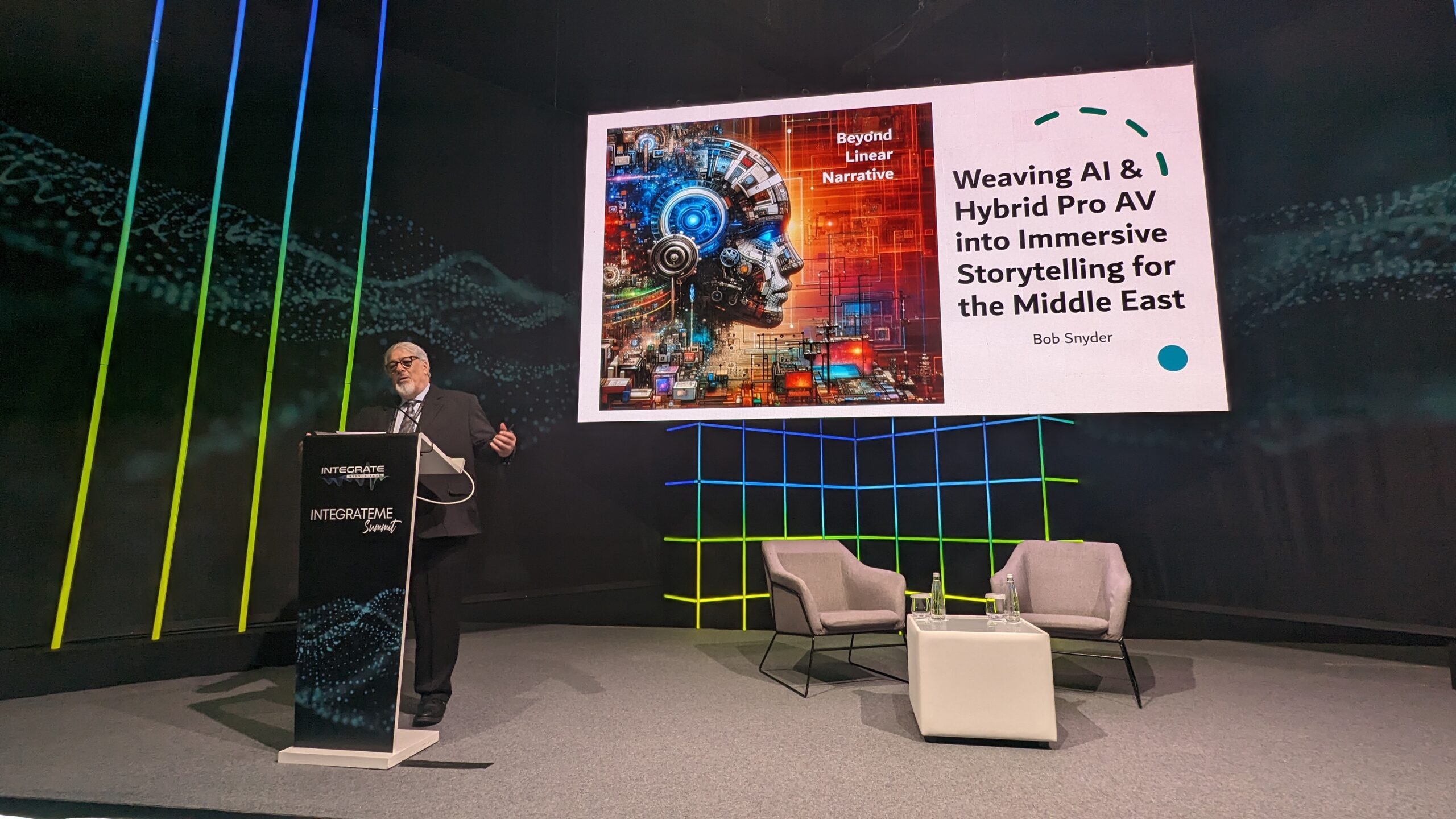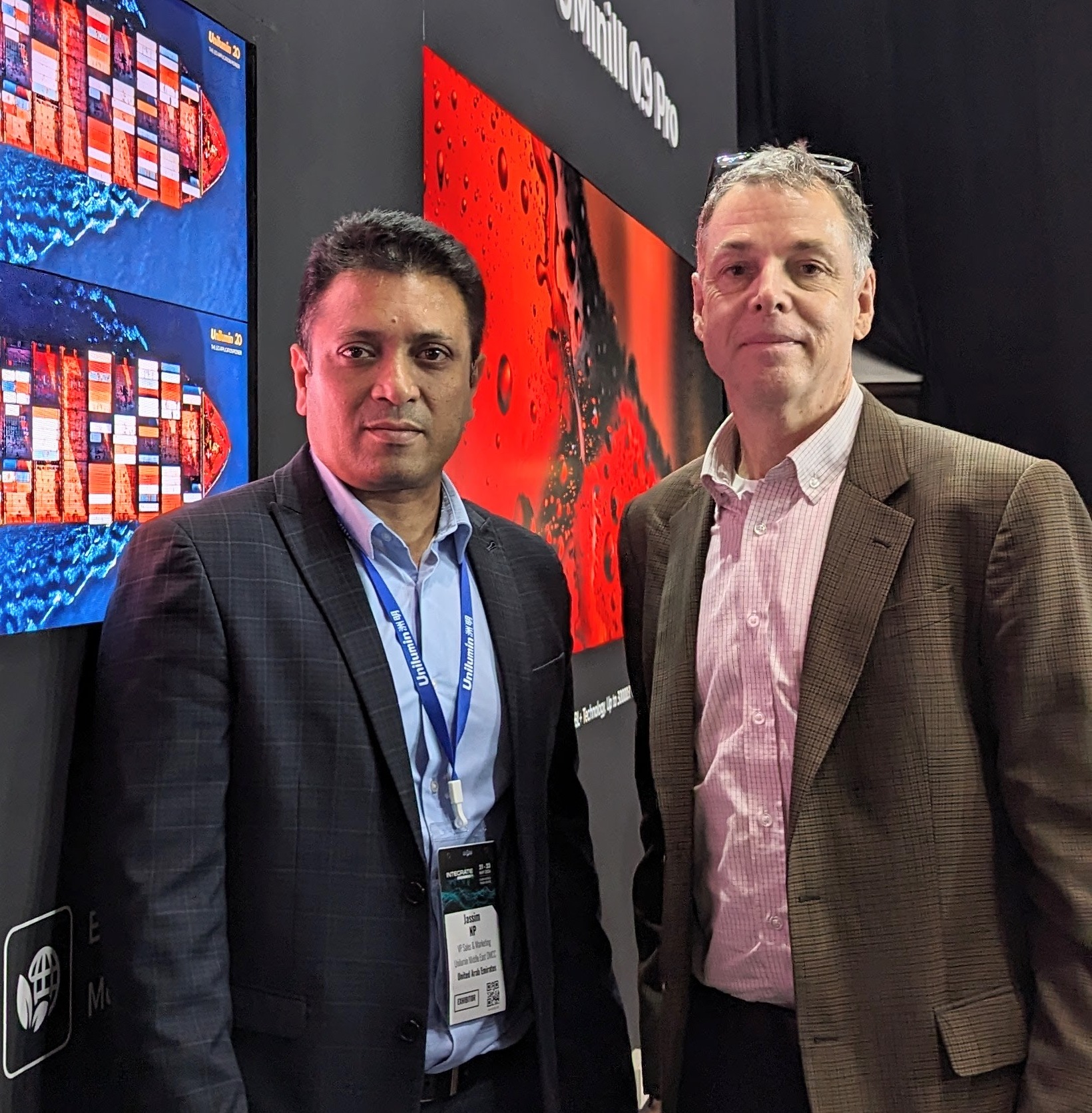Introduction
The audiovisual (AV) and multimedia industries in the Middle East have experienced significant growth over the past decade. This growth is driven by infrastructural development, technological adoption, and a thriving business environment, particularly in Dubai and the Emirates. In this report, we take an in-depth look at the contributions of four leading AV companies in the region: QSC, Unilumin, Bose and Shure. We will also explore the key roles played by distributors in the region. Furthermore, we will compare the Middle Eastern AV market with those in the United States and Europe, focusing on various verticals, including corporate, hospitality, higher education, and healthcare.
Our report is anchored around the Integrate Middle East (IME) Trade Show which took place in Dubai recently. Bob Snyder was the show host. As the Editor-in-Chief of Channel Media Belgium, Bob reports on trends in IT, audio/video, and smart building industries in Europe and Middle East. He explained that event though Integrate ME trade show is just in its second year it is an important regional technology event that it why it is associated with CABSAT, a much larger technology event focusing on media and entertainment services in the Middle East as well as, Africa, and Southern Asia (MEASA).
Bob Snyder takes the stage at Integrate ME
The IME event brings together manufacturers, system integrators, and end users from the retail, hospitality, healthcare, education, media, and government sectors. While Dubai is known for its shopping malls, the advancement of Audiovisual technologies in Dubia and the Emirates is much more than just in retail. This city hosts large corporate enterprises and many startups with office spaces that require AV technology. The Integrate ME technology trade show offered a great platform to get familiar with the most recent AV technology products available in the region and listen to experts take the stage to discuss potential applications, the transformation of office spaces, and the opportunity to enhance client experiences across all market sectors.
Market Overview
According to Global Information Inc., the Middle East professional AV market is expected to reach 22 Billion (US dollars) by 2030 (GILL 2024), which indicates significant growth potential despite political unrest in the region. This growth is most likely due to governments investing in infrastructure projects, which creates a demand for AV solutions in public spaces, transportation hubs, and educational institutions. Additionally, the middle class has more disposable income than other regions, which means greater spending on entertainment and experiences and a demand for AV solutions in hospitality and leisure. The Middle East also has a young, tech-savvy population that readily adapts to new technologies and interactive and immersive AV Experiences.
Influence of Leading AV Companies in the Middle East
QSC
Before the keynote presentation, I spoke with Chant Utukian, the Managing Director of the MEA region. QSC is known globally for its high-quality audio products, including digital mixers, loudspeakers, and networked audio, video, and control systems.
“The AV market in the Middle East is booming, driven by government investments in infrastructure, tourism, and events. This demand for high-tech solutions is fuelled by a focus on luxury developments and smart city initiatives, but the region is still catching up to the more mature markets in the US and Europe.”
- Chant Utikian, QSC Regional Managing Director
According to Chant, QSC has seen significant regional growth due to new infrastructure projects that require advanced signal distribution over IP networks, primarily with installations related to real estate projects. This includes installations in commercial buildings and entertainment complexes as well, which are becoming increasingly technologically sophisticated. Some of the notable projects that QSC has been involved in the region include the Dubai International Airport, Atlantis The Palm and Atlantis The Royal.
Unilumin
I met Jassim N.P VP Sales & GTM, MENA region on the Integrate ME show floor. Specializing in LED display solutions, Unilumin provides flexible, customizable, and innovative display technologies.
Mark and Jassim N.P on the show floor
According to Jassim, the Middle East benefits greatly from versatile display solutions because of its diverse and often extreme architectural environments. This includes digital signage in retail and hospitality and the desire to create ever-more immersive and engaging customer experiences.
“When it comes to the Middle East, the main driver of opportunities can be attributed to a new and ever-expanding city landscape, including major entertainment destinations. From Airports to command centers, Stadiums, and eGaming hubs, the demand is diverse. Unilumin’s wide product portfolio includes a dedicated series for creative concepts that can be further customized, creating immersive and engaging customer experiences.”
- Jassim N.P, Unilumin VP Sales Middle East & Africa
Some of the notable projects that Unilumin has been involved in the region include Qata F1 Circuit (Partial), Al Jazira stadium – UAE, and Abudhabi International Airport’s recently opened Midfield Terminal (Terminal A).
Bose
At the end of the event’s second day, I sat down with Kassim Salim, United Arab Emirates Territory Manager for Bose. Bose is renowned for its commercial audio solutions, including speakers and sound systems, as well as its consumer products and noise-cancelling technology. I asked Kassim about Bose selling off its professional commercial installation and conferencing business, and the challenge of competing under a new name in two years.
 Mark and Kassim Salim at Bahri
Mark and Kassim Salim at Bahri
Kassim indicated that even without the Bose logo, their products will still be considered highly favored in luxury hotels and high-end residential developments due to their reputation for premium quality and innovative features, not just the Bose brand name. Bose has a strong presence in healthcare facilities and corporate environments, and Kassim believes its products will continue to be specified for patient entertainment and conference communication systems.
“The AV Industry of MEA represents a broad spectrum of projects. The projects landscape across various verticals like Retail, Hospitality, F&B, Education and Sports is growing significantly in addition to others. Various stakeholders like End User, Consultants, System Integrators in a project here are deeply involved and we work closely with them to provide amazing Audio experience across MEA. As Bose Professional, we have resources locally available to serve our customers and are proud to be part of growth journey of the region.”
- Kassim Salim, Bose Territory Manager
Recent prominent projects Bose has engaged in within the region encompass the Dubai Water Canal, Al Nasr Stadium, Riyadh Boulevard, 974 Stadium, Doha Festival City, Mandarin Oriental, and the 25H hotel.
Shure
On the last day of the event, I sat down with Antony Lovell, Marketing Development and Sales Director, MEASA. Shure is a global leader in producing microphones, wireless systems, and audio electronics.
“The Middle East clientele demand the highest, most consistent performance from the equipment and solutions specified for their projects, whether they be in the corporate, government or education markets. Shure has had an on-the-ground office presence here for over ten years and, thankfully for us, our reputation for helping the end user achieve the best possible audio in their meeting and performance spaces is very well received across the region.”
- Antony Lovell I, Shure Sales Director, MEASA
According to Antony, Shure’s reputation for quality and reliability has made it a popular choice in corporate boardrooms, higher education institutions, and government installations in this region because clear communication offered by Shure’s products is imperative in these types of environments.
Role of the Consultant in the Middle East
The audiovisual and multimedia industry in the Middle East is highly competitive and dynamic and requires a high level of professionalism, quality, and service from the AV Consultant. The consultant must be able to meet the diverse and demanding needs of the end-users and keep up with the changing trends and technologies in the industry. The consultant must also be able to differentiate from design-build firms in the region by offering expertise in designing unique and customized solutions and demonstrating significant value to the architect and the client.
Role of Distributors
Distributors serve as critical enablers in the Middle Eastern AV market. They bridge the gap between manufacturers and end-users, providing essential services, including product education, installation guidance, and after-sales support. According to all the manufacturers I talked to, the greatest challenge in this region is a lack of a skilled installation workforce, which frequently results in a reluctance to advance to the latest technologies due to a lack of familiarity. AV technology distributors ensure that the latest technologies from companies like QSC, Shure, Unilumin, and Bose are readily available and expertly implemented across various sectors. Thus, the efficiency, reliability, and technical support these distributors provide directly impacts AV technologies’ adoption rates and success in the region.
Regional Specificity
Cultural preferences can influence the types of AV solutions specified. For example, the variety of languages in this region necessitates AV solutions that can cater to diverse audiences. Mosques may require specific audio and media solutions. The hot and dry climate requires AV equipment designed for durability and heat resistance.
Comparison by Sector between the Middle East vs. United States and Europe
Hospitality
The booming tourism sector in the Emirates drives the demand for cutting-edge AV solutions in luxury and boutique hotels. High-end audio systems, automated controls, and immersive displays are becoming standard. In contrast, the United States and Europe, while similarly innovative, have a greater mix of high-end and mid-range AV installations, reflecting a wider spectrum of hotel categories and a more mature market with varied customer expectations.
For example, the KRASOTA Dubai restaurant presents Imaginary Art and Imaginary Future show in a immersive dining experience. The venue is an auditorium with a large circular table that seats 20 diners, with high-resolution projected images across the curved walls and table.
Immersive Dining Experience at KRASOTA
Corporate Sector
In the Middle East, the emphasis on modern workspaces is relatively new, and integrated AV solutions for collaborative environments are just starting to take off. High-profile projects in Dubai and other financial hubs have advanced AV installations and stand out in this region. Meanwhile, the United States and Europe lead the world in adopting comprehensive AV solutions because there is an established demand for digital collaboration tools. Remote working is not as common in MENA, thus hybrid capabilities are not considered a requirement in the Middle East.
Higher Education
Educational institutions in the Middle East are increasingly incorporating AV technologies for interactive learning, virtual classrooms, and digital resource libraries. However, the United States and Europe have a much more entrenched use of AV in higher education and more teaching, research collaboration, and efforts to achieve greater administrative efficiency.
Healthcare
The adoption of AV technology in healthcare in the Middle East is impressive. The applications in patient care, medical training, and facility operations are some of the newest and most expansive in the world. The investment in new facilities in this region has allowed it to leapfrog the integration of AV systems in healthcare in the United States and Europe where it is considered highly advanced and widespread. While the US and Europe have been focusing on telehealth solutions, patient monitoring, and healthcare staff training, they are challenged by the high cost to build out new facilities. Meanwhile, in the Middle East, building out massive facilities is much more commonplace, and the ability to invest in new facilities is creating opportunities to incorporate the most advanced medical equipment and associated AV technologies.
Summary Comparison of the Middle East with the United States and Europe.
The following table summarizes some of the main similarities and differences.
| Market Size | Growth | Preferences | Challenges |
| Smaller than the United States and Europe, but with a high potential for expansion. | Faster than the United States and Europe, driven by the demand for innovative and immersive solutions, and the development of infrastructure and tourism in the region. | High-end, premium, and customized solutions, smart and integrated technologies. More influenced by cultural and religious factors, environmental and sustainability concerns. | More affected by political and economic instability, security and regulatory issues. More dependent on the oil and gas sector and government spending and policies. Challenged by the lack of skilled workforce. |
Conclusion
The audiovisual industry in the Middle East continues growing rapidly, fueled by infrastructure investments and technological enthusiasm. The industry is characterized by the demand for innovative, immersive, and smart solutions spurred by the growth of tourism in the region. Cultural, religious, environmental, and sustainability factors, as well as political, economic, security, and regulatory issues, influence the AV industry.
Companies like QSC, Shure, Unilumin, and Bose play critical roles in this region’s growth, offering solutions that cater to high expectations and the Middle East’s unique regional requirements. The role of consultants, designing systems, and AV distributors in facilitating access to these technologies cannot be overstated, as they both support installers and ensure the smooth implementation of AV products.
Compared to markets in the United States and Europe, the Middle East shows a strong growth trajectory in the hospitality, corporate, higher education, and healthcare sectors. However, while the level of adoption in the Middle East is impressive, they lack a skilled installation workforce and rely heavily on manufacturers and distributors to fill the gap. The US and Europe are more mature regarding AV integration, reflecting years of entrenched practices, but there is less demand for extremely high-end immersive designs. Thus, the Middle Eastern market continues to close the gap with its innovative and large-scale applications of AV technologies.
References
GILL (2024). Middle East Pro AV (Audio-Visual) Market – Industry Trends and Forecast to 2030. GLL Global Information Inc.. Retrieved: https://www.giiresearch.com/report/dbmr1379651-middle-east-pro-av-audio-visual-market-industry.html



